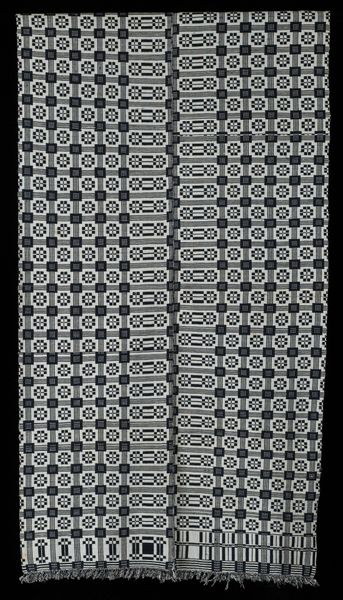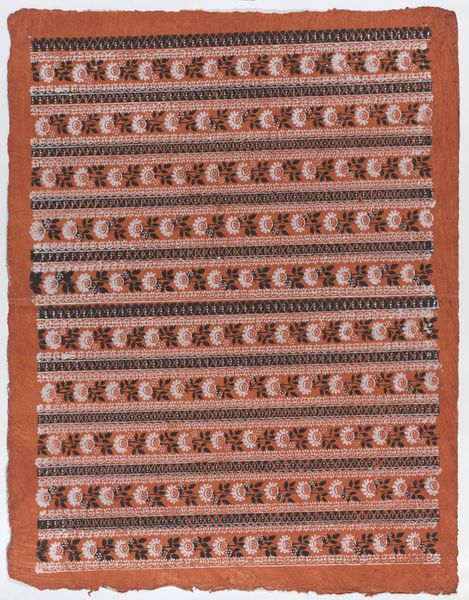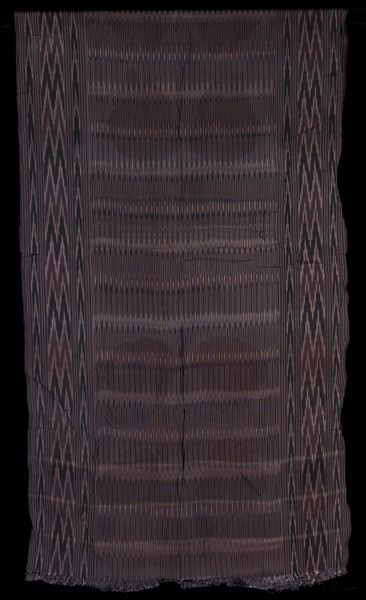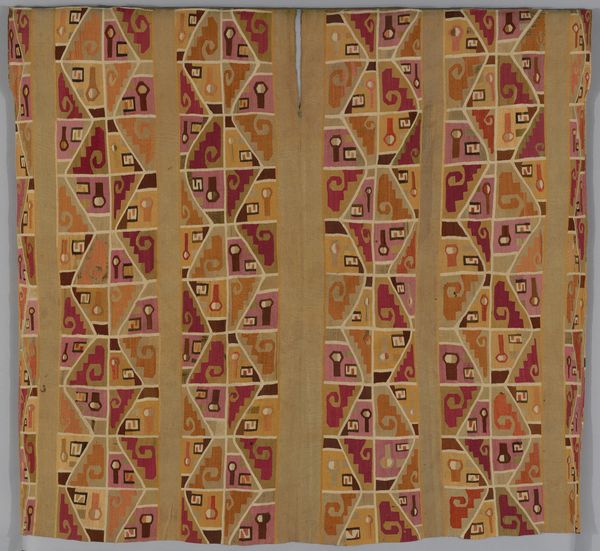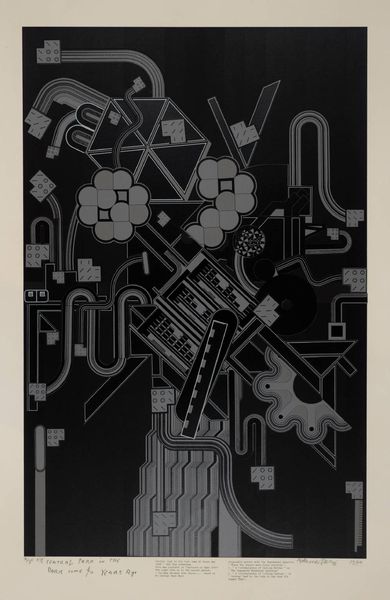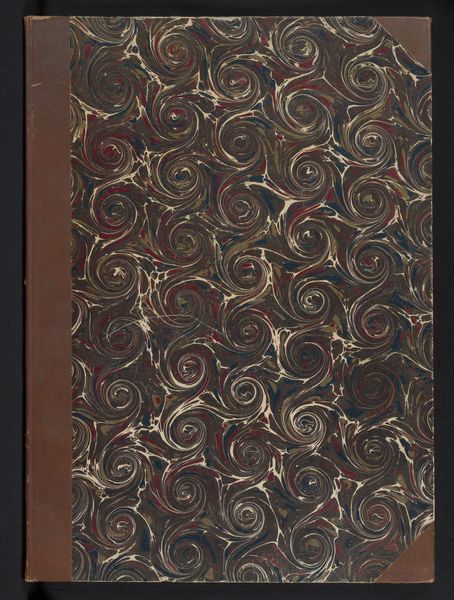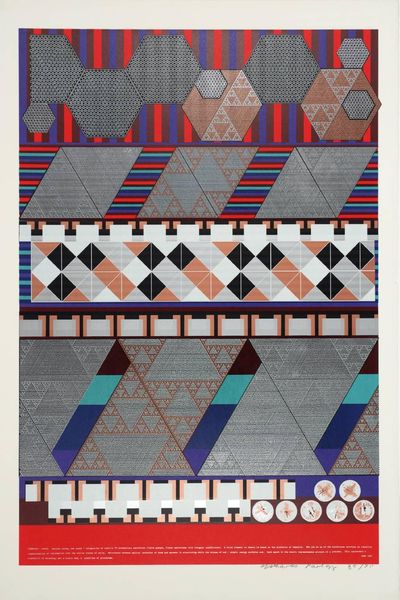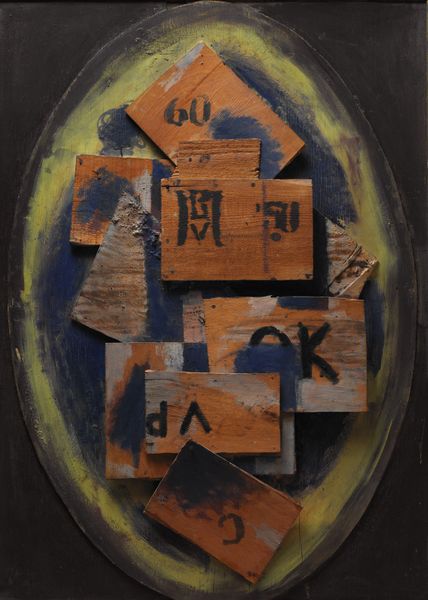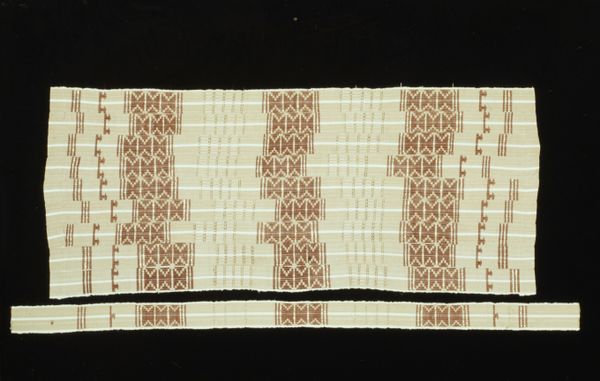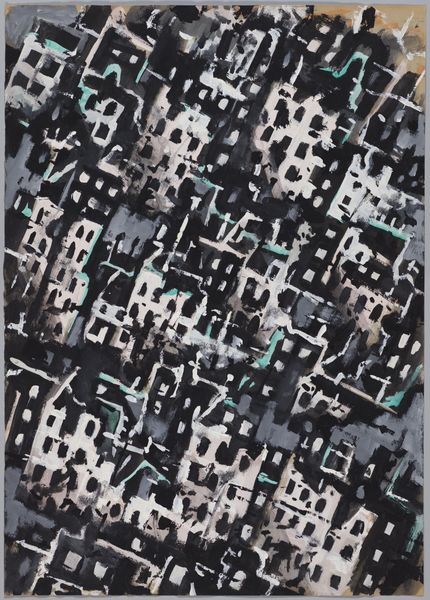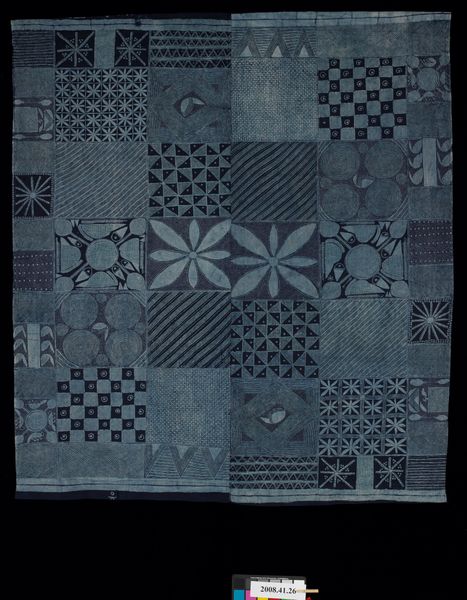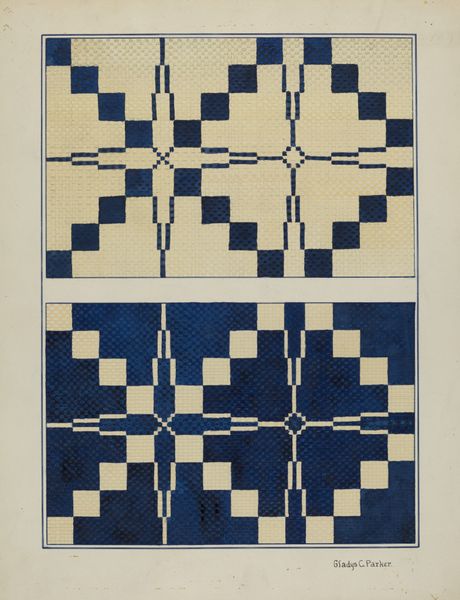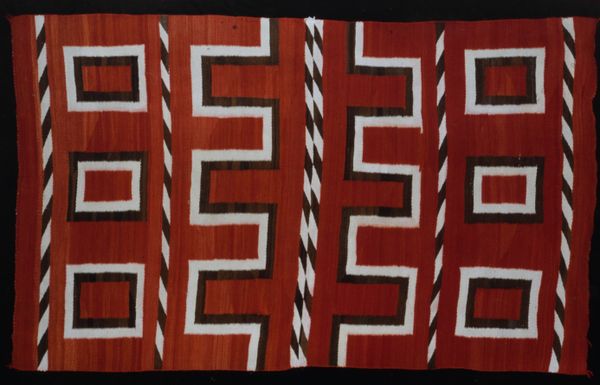
Dimensions: support: 920 x 710 mm
Copyright: © The estate of Anwar Jalal Shemza | CC-BY-NC-ND 4.0 DEED, Photo: Tate
Curator: Anwar Jalal Shemza, born in 1928, created this piece, "Chessmen One." The support measures 920 by 710 mm. Editor: It's funny, it gives me this feeling of ancient board games, like the quiet before a big strategy unfolds. But at the same time, it's really playful! Curator: Shemza's work often blends modernism with his Pakistani heritage. Chess, in this context, could be a metaphor for cultural and political strategies, the game of power that shapes identity. Editor: I see that. Each piece does seem to hold a different weight, different rules. Maybe it's about the artist finding his place in the game, or challenging the whole board? Curator: Exactly. He invites us to consider how we, too, are positioned in these power dynamics. The repetitive nature of the chess pieces also draws from Islamic art’s emphasis on pattern and rhythm. Editor: Huh, it makes you think about how much choice we really have. It's a beautifully unsettling piece. Curator: Indeed, a dialogue between form and meaning that continues to resonate.
Comments
Join the conversation
Join millions of artists and users on Artera today and experience the ultimate creative platform.
tate 2 months ago
⋮
The painting Chessmen One depicts four horizontal rows of black chess pieces which increase in height from the top down. They are set against a lightly textured pale blue background. Each row of chessmen is decorated with sinuous linear detail in different colours, red on the top row, blue on the second, cream on the third and green on the fourth. Each horizontal division between the rows is painted in one of these colours. The chessmen are depicted in a schematic, near abstract frontal view that emphasises the flatness and two-dimensional surface of the canvas.
